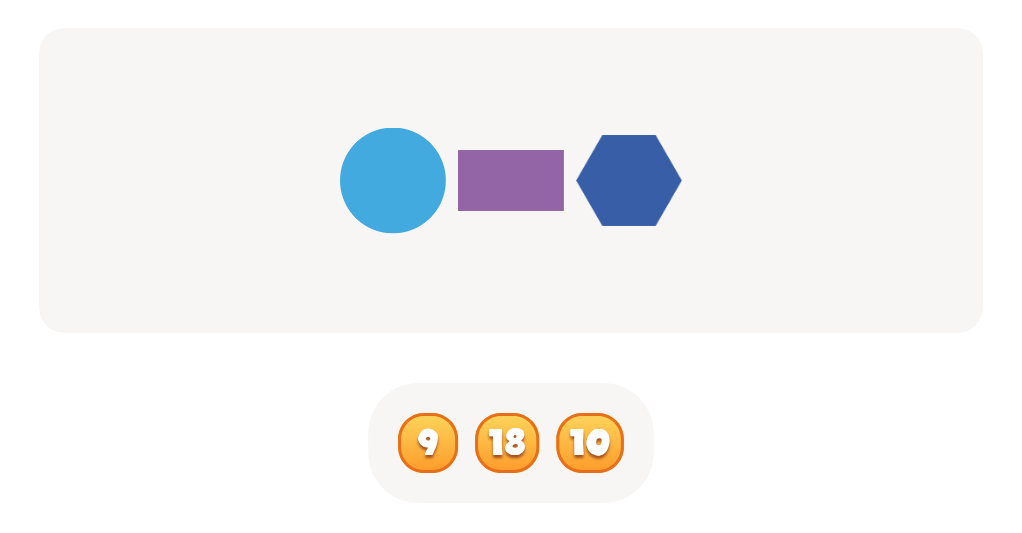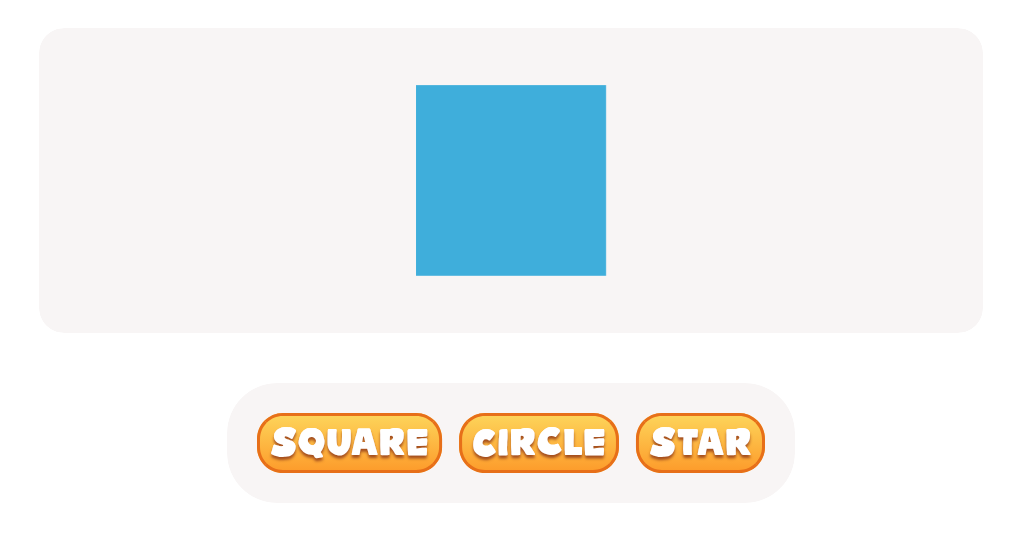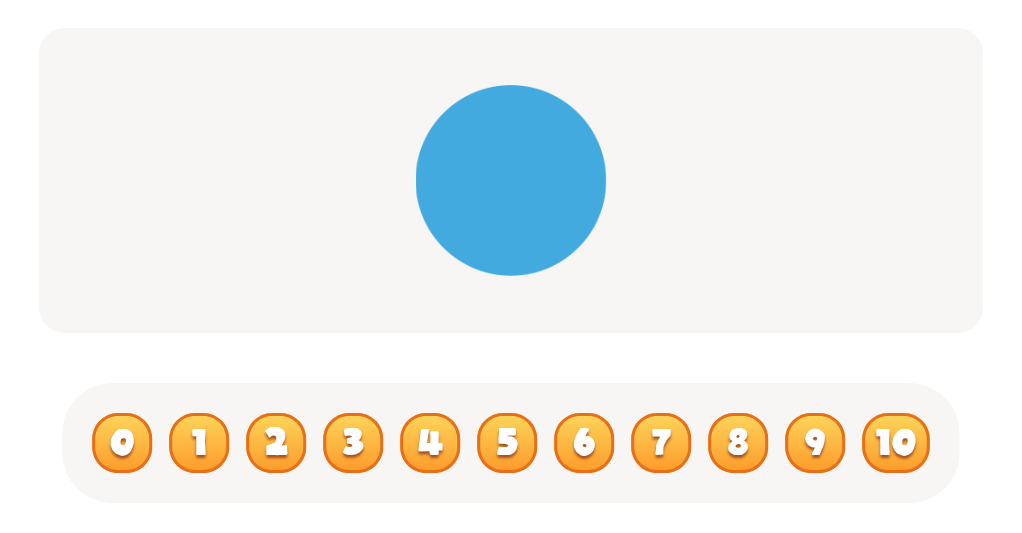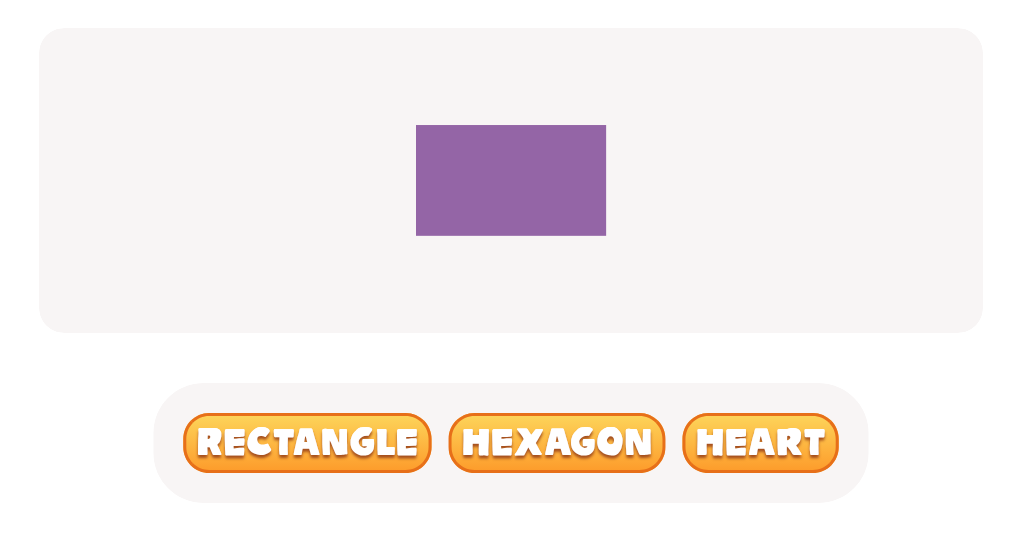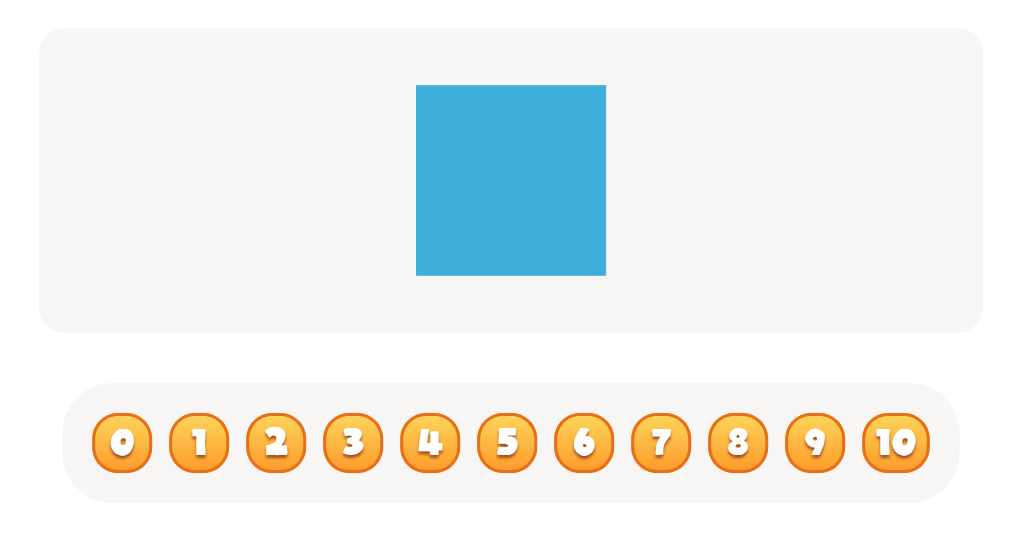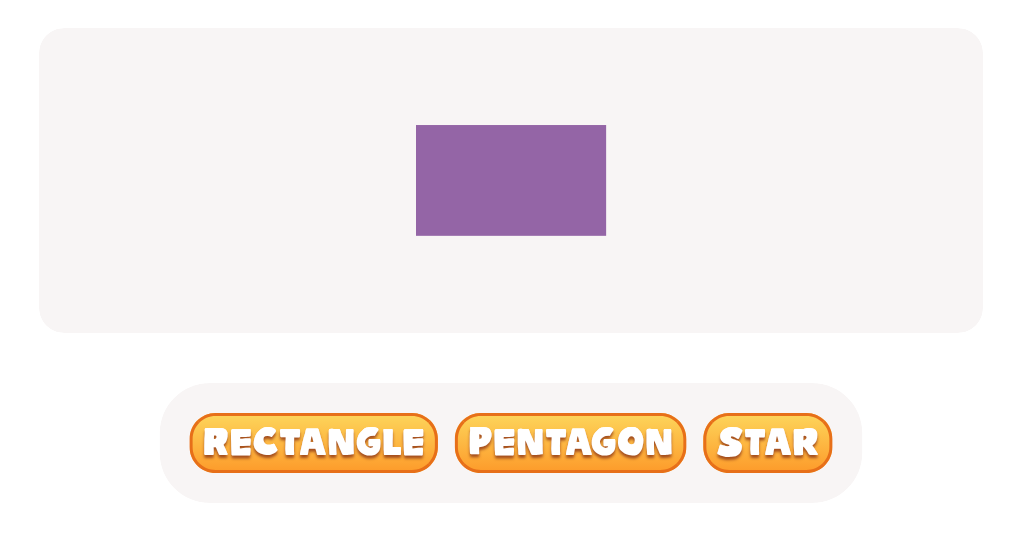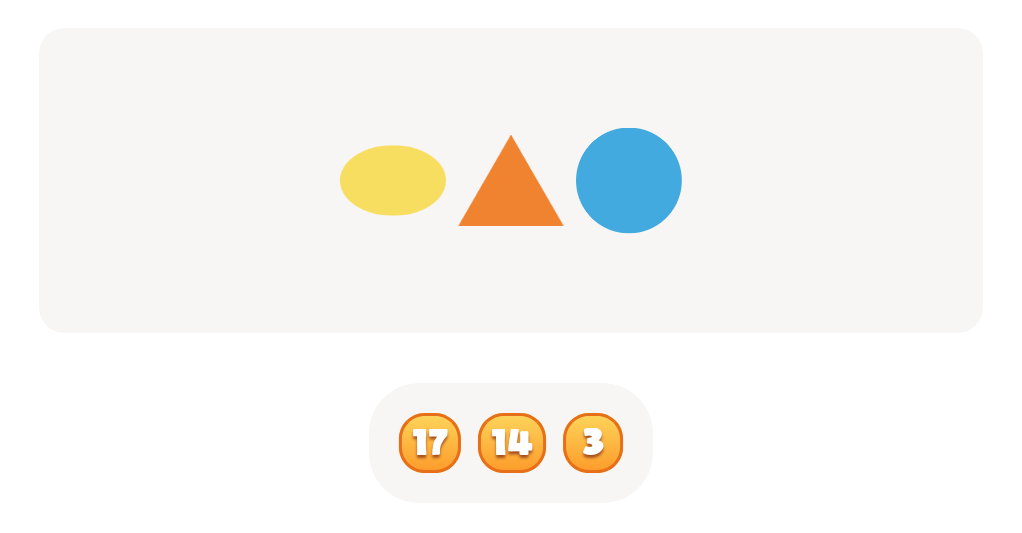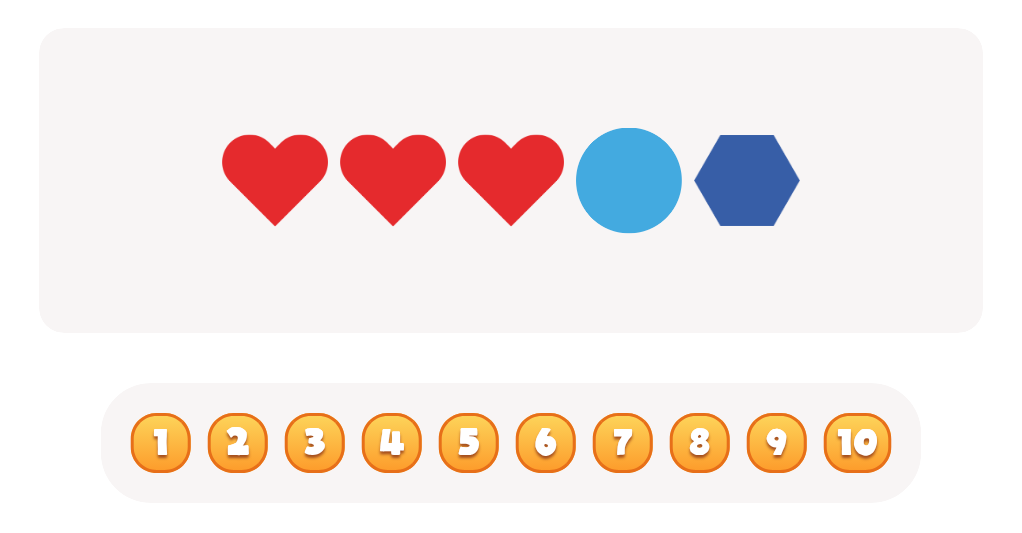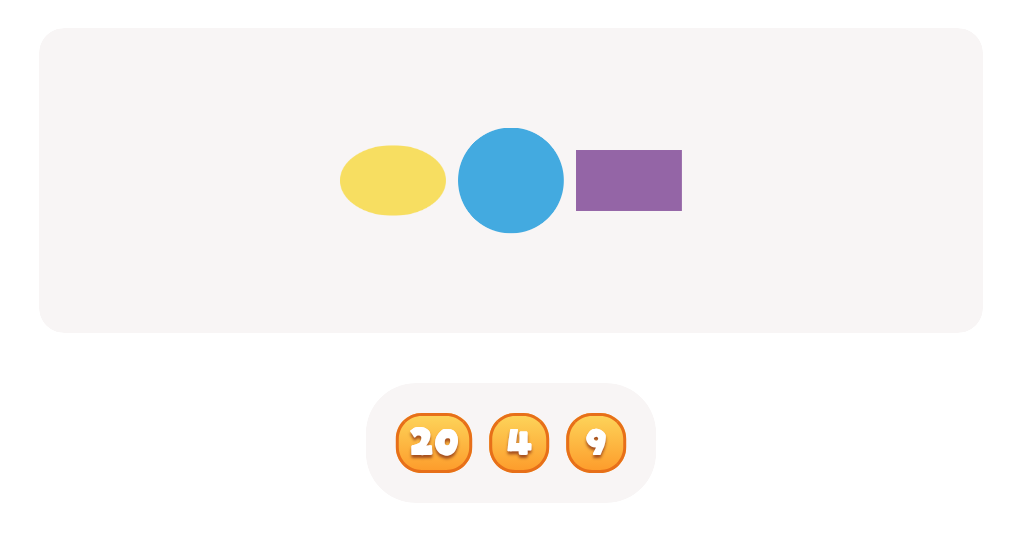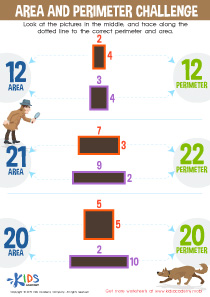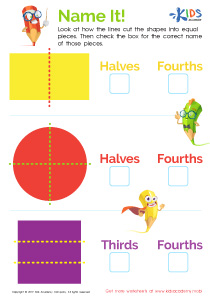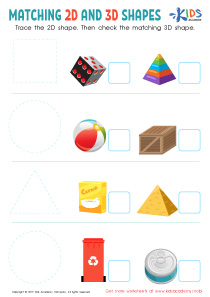Counting skills 2D Shapes Worksheets for Ages 3-9
7 filtered results
-
From - To
Enhance your child's counting skills while exploring the fascinating world of 2D shapes with our fun and engaging worksheets, designed for ages 3-9. These printable activities encourage young learners to identify and count various shapes such as circles, squares, triangles, and more, fostering critical early math skills. Each worksheet incorporates vibrant visuals and age-appropriate challenges that make learning enjoyable. Our resources cater to diverse learning styles, ensuring every child can thrive. Perfect for home or classroom use, these counting skills worksheets are an ideal way to build a strong mathematical foundation and boost confidence in young learners. Start counting and shaping minds today!
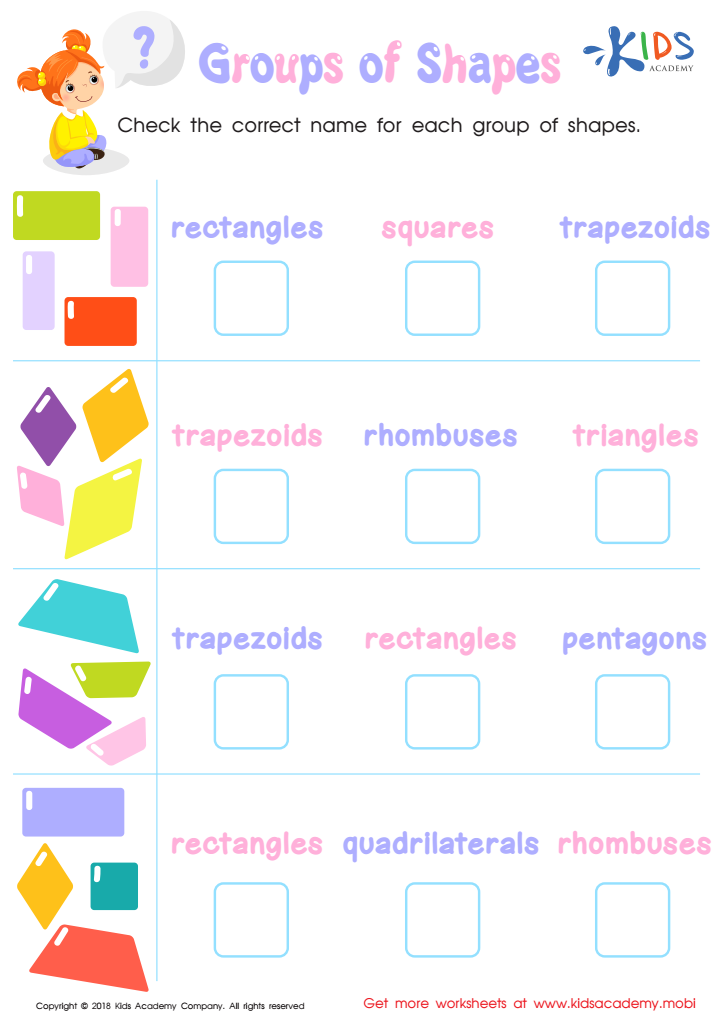

Groups of Shapes Worksheet


Geometry – Assessment 1 Worksheet
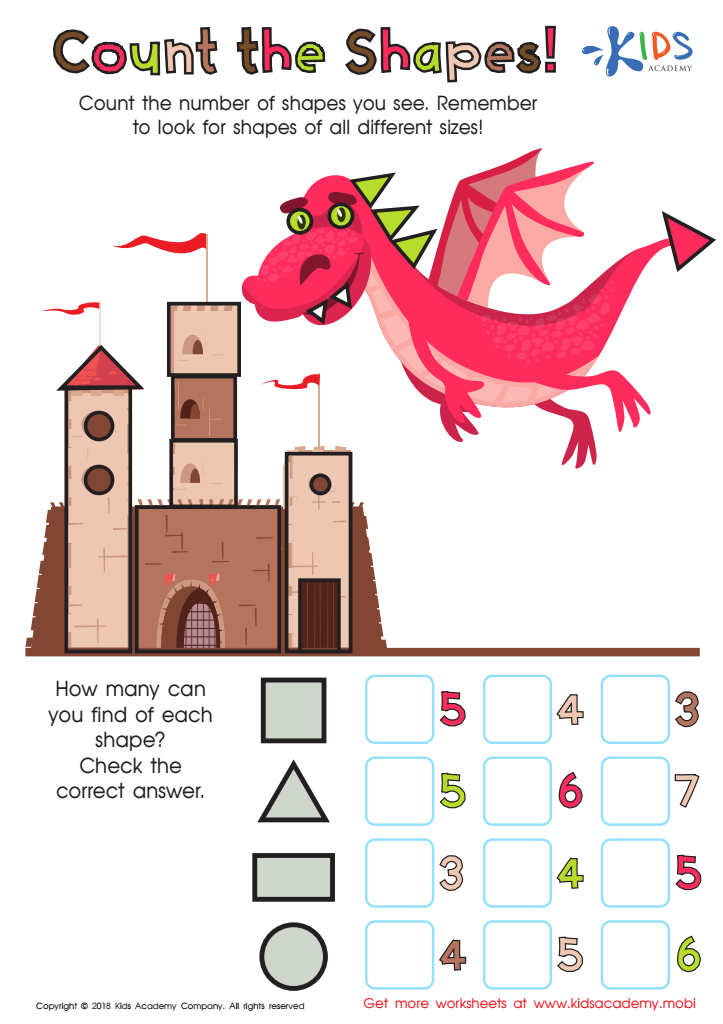

Count the Shapes Worksheet
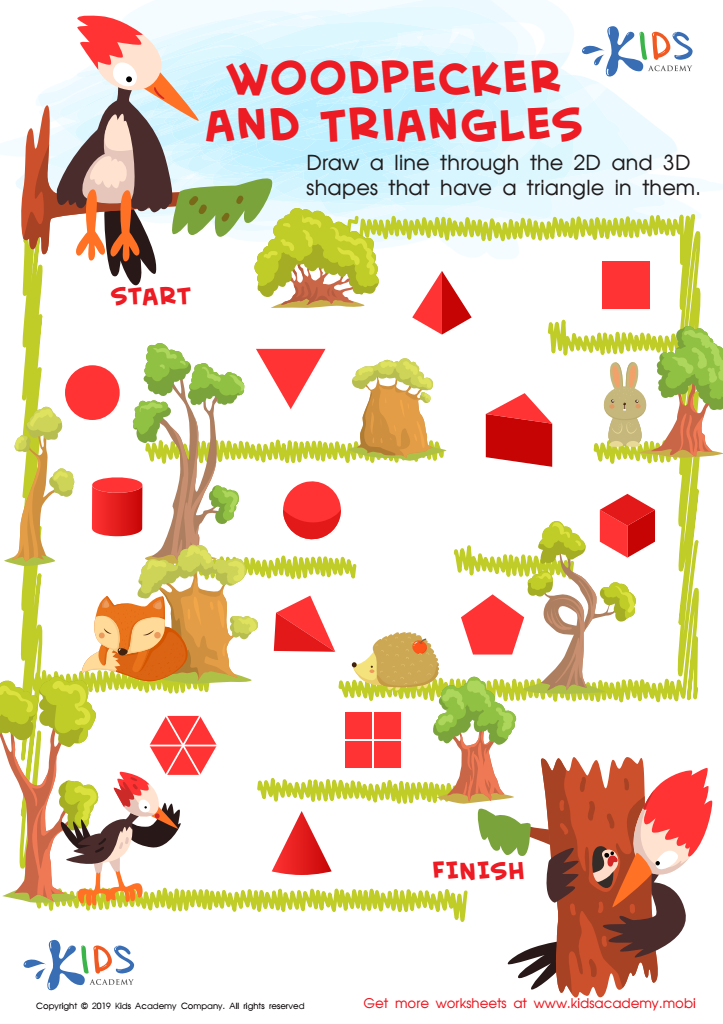

Woodpecker and Triangles Worksheet


Using Squares to Make Rectangles Worksheet
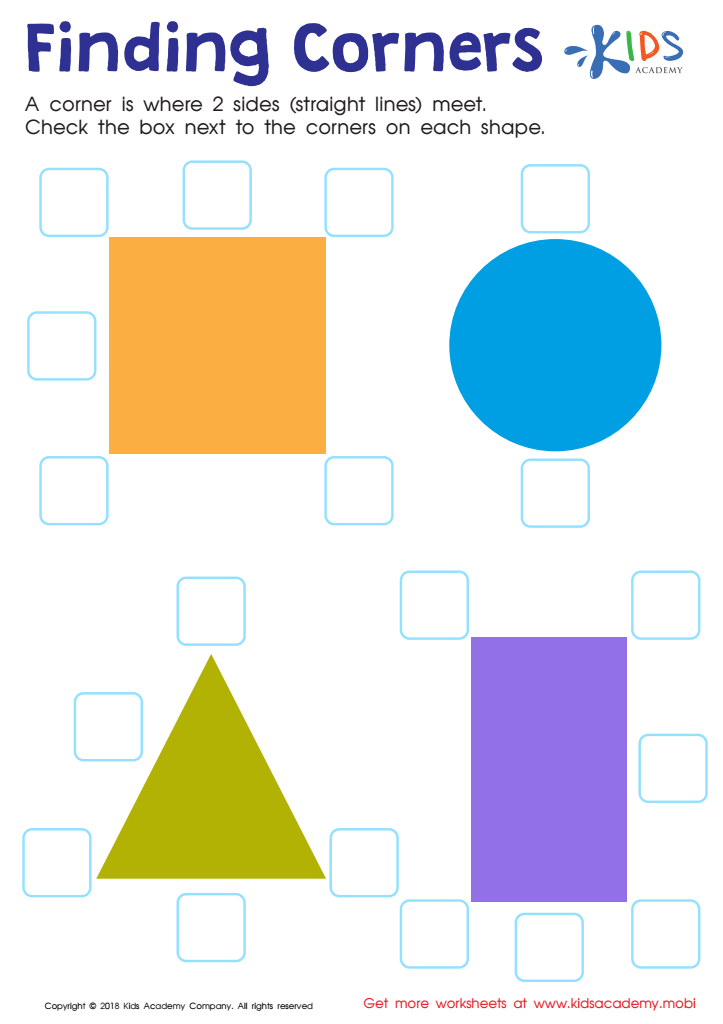

Finding Corners Worksheet


Gingerbread Man Geometry Maze Worksheet
Counting skills and understanding 2D shapes are foundational abilities that significantly influence a child's cognitive development and future learning. For children aged 3-9, developing these skills lays the groundwork for more complex mathematical concepts and problem-solving abilities later on.
Counting skills enhance children’s number sense, helping them recognize patterns and understand quantity, which are essential for everyday activities and later academic success. Mastery of counting aids in comprehension of addition and subtraction, equipping children with the tools they need for future mathematical challenges.
Simultaneously, knowledge of 2D shapes fosters spatial awareness, critical for visual-spatial reasoning. Recognizing shapes enhances children's ability to categorize and describe the world around them, influencing emotions and creativity through art and play. These shapes are a precursor to understanding more complicated geometrical concepts.
For parents and teachers, nurturing these skills helps cultivate a constructive learning environment, encouraging curiosity and exploration. Activities that involve counting and shape recognition can be easily integrated into daily routines, transforming learning into a fun experience that promotes enthusiasm toward mathematics and geometry. Ultimately, investing time in these foundational skills equips children for lifelong success in both academics and daily problem-solving scenarios.
 Assign to My Students
Assign to My Students
